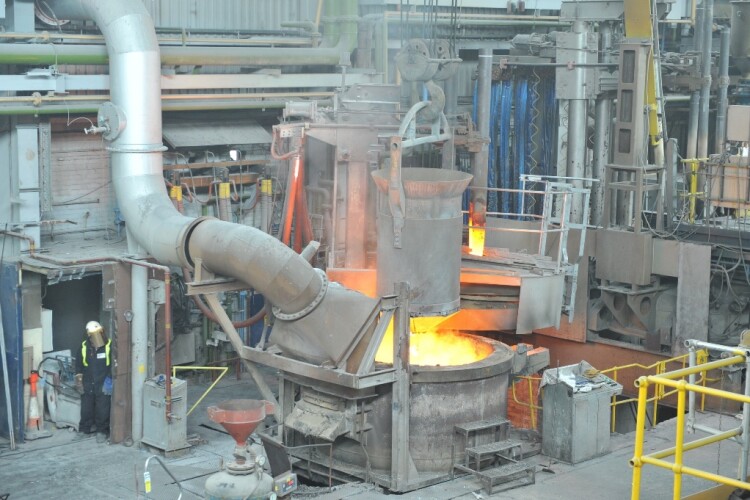The Cement 2 Zero project is seeking to advance the decarbonisation of the construction, cement and steel sectors by ensuring its cement production process can be scaled up from laboratory to pilot plant.
Partner organisations include the Materials Processing Institute, University of Cambridge, Celsa Steel UK, Atkins, Balfour Beatty, Day Aggregates and Tarmac, with each taking on a role in research, development, scaling and testing.
The trial melt was carried out using the Materials Processing Institute’s seven-tonne electric arc furnace (EAF) on its Teesside campus.
Three further melts will be carried out on Teesside and once substantially trialled, developed and de-risked, a series of further industrial-scale trial melts will be held at Celsa’s EAF in Cardiff.
The process was invented by a team led by Dr Cyrille Dunant at the University of Cambridge, who discovered that the chemical composition of used cement is virtually identical to that of the lime-flux used in conventional EAFs.
Cement 2 Zero, previously dubbed Cambridge electric cement, uses recycled cement as the flux in the electric steel recycling process, the by-product of which when cooled and ground produces Portland cement clinker that can be blended to make ‘zero-emissions’ cement.
The pilot-scale EAF experiments use the flux material containing end of life recycled cement processed by Day Aggregates and Swedish mining group LKAB, using a variety of scrap steel inputs provided by Spanish steel company Celsa.

The EAF melts are being undertaken by the Materials Processing Institute in its Normanton plant, with the support of Phillip Cartlidge from Celsa UK. This allows the team to embed large-scale steel recycling expertise into the pilot-scale experiments.
The testing of melt procedures and slag cooling offers a greater understanding of creating an end-product that could be produced on an industrial scale, the project team says. Tarmac is beginning the process of testing the new clinker to understand the grinding properties and assess performance criteria of the new material.
Balfour Beatty and Atkins are defining testing protocols and detailing projects that will use the material produced from these trials.
The Cement 2 Zero project secured £6.5m of government funding from UK Research & Innovation (UKRI) as part of the Transforming Foundation Industries challenge.
Chris McDonald, chief executive of the Materials Processing Institute, said: "Until now the research has been at a laboratory scale. The Institute having a seven-tonne EAF has enabled this next scale up phase of development and testing to take place. The preliminary findings are encouraging in terms of providing the project team with a much greater understanding of the process and how it can be improved and scaled.
“The initial trial melt is a critical part of the project and a huge step towards creating a more efficient, environmentally friendly, and resource conscious manufacturing process contributing to the decarbonisation of the construction, cement and steel sectors.”
As previously reported, some commentators question the veracity of the net zero claim, given that the product requires an existing (carbon-intensive) building to be knocked down and crushed by heavy machinery, and for steel to be melted.
Got a story? Email news@theconstructionindex.co.uk



